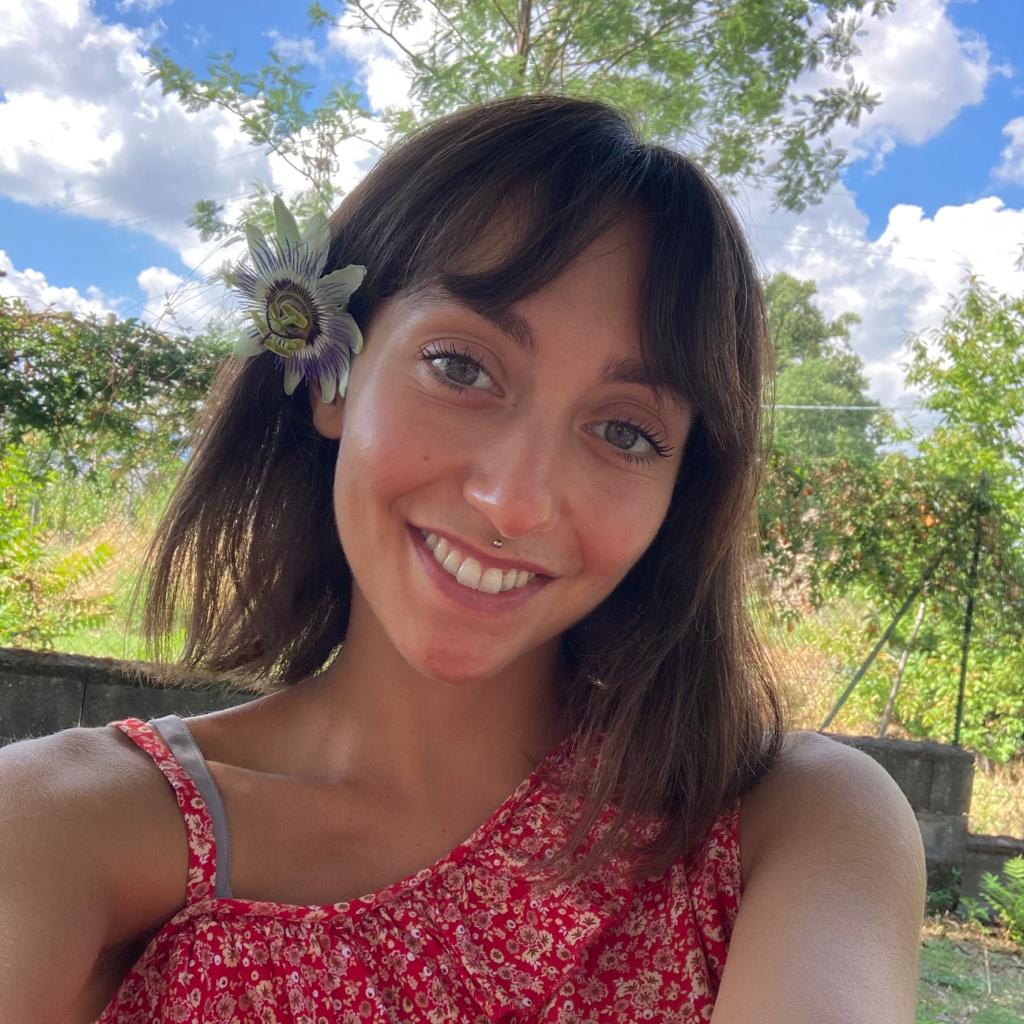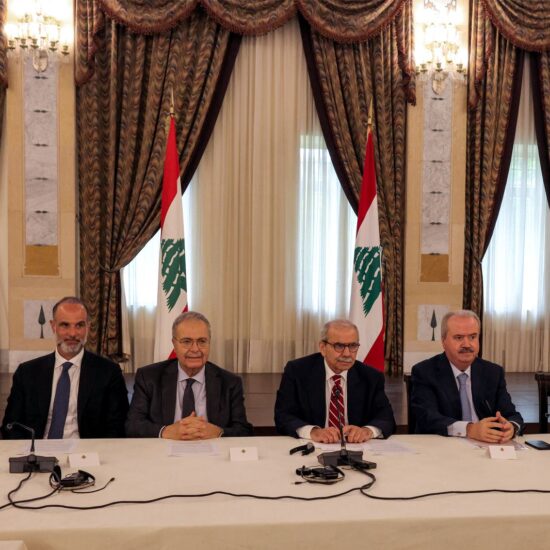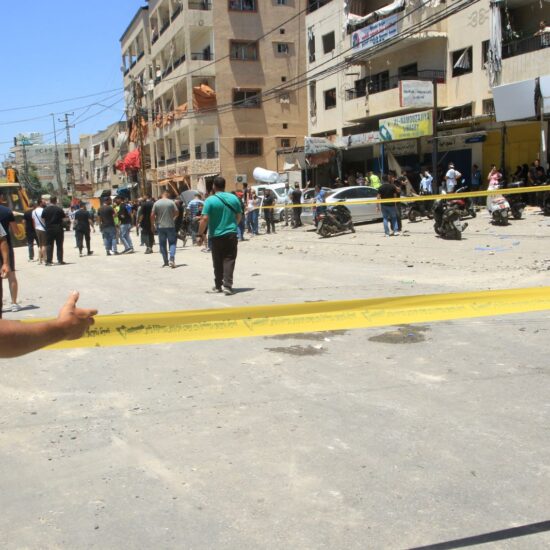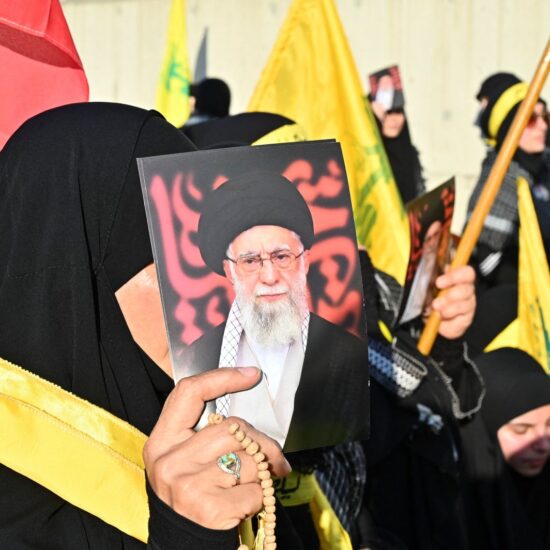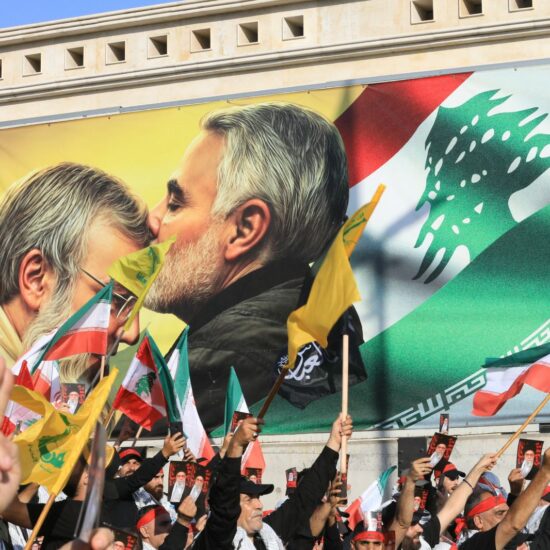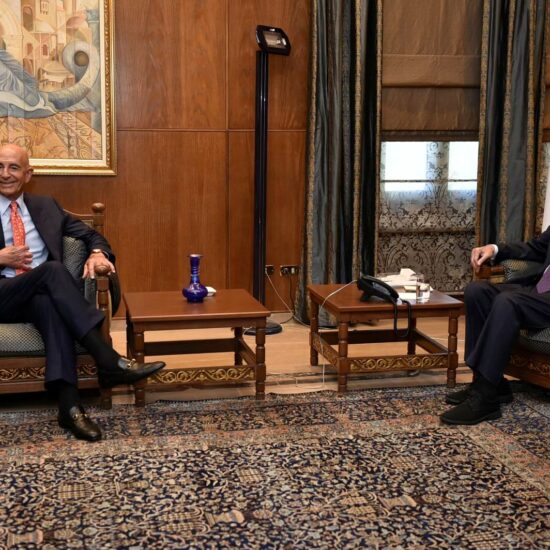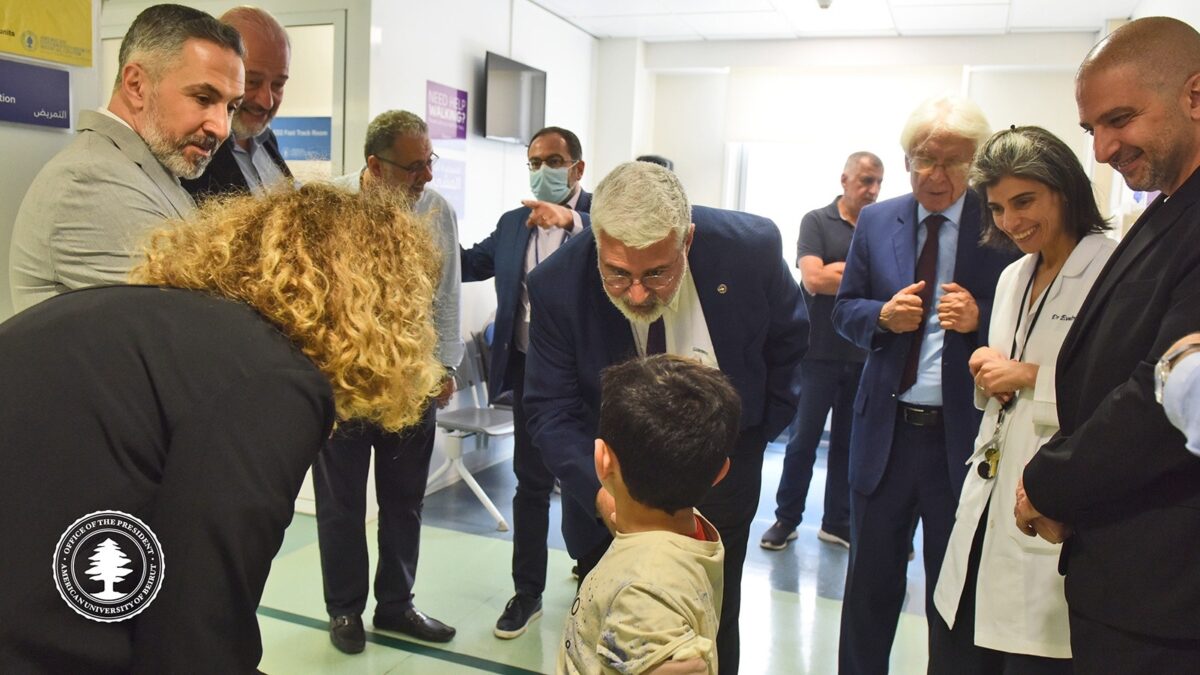
Adam Afana’s medical journey from Gaza, to Egypt, until Beirut: a story of hope
He’s only five years old and already has two stories to tell. That of being born and that of having survived. In the Gaza Strip, as a child. Adam Afana lost his home, his family, and the almost complete functionality of his left arm in an Israeli attack on Gaza on October 29, 2023, twenty-two days after the start of the tireless offensive that has now lasted for exactly eight months. His father, his aunt, his babysitter, his grandmother, and three of his cousins were killed under the rubble of their destroyed home: while his mother and brother Shaaban were seriously injured, just like him.
The third experience he will tell, to future generations incredulous of how atrocious history could turn out to be – in this present of today – will be that of being the first child injured by the Israeli attacks on Gaza to land in Lebanon in order to receive appropriate medical care. With the help of the Ghassan Abu-Sittah Children’s Fund, in cooperation with the Palestine Children’s Relief Fund, last Monday, May 27, Adam landed in Beirut, welcomed by a team of physicians who will take care of him – for all the necessary time – at the hospital facilities of the American University’s Medical Center (AUBMC).
The President of the AUB, Fadlo Khuri, announced it on X: “We received today a five-year-old child from Gaza who is the first patient to arrive in Lebanon. He is to receive medical treatment for extensive injuries inflicted during the ongoing Israeli military’s mass and indiscriminate targeting of civilians in the Strip.” And he added: “Sadly, we expect to see many more children whose lives were negatively impacted by this ongoing assault. We will care for them with all the expertise that AUBMC can bring to bear.”
Tomorrow, among the survivors, he will tell the world to come his experience, how he endured the pain of loss, the injuries to his left arm which he risked losing, aggravated not by the severity of the trauma – but due to the absence of electricity and adequate, if even safe, hospital infrastructure: the indirect weapon of the genocide committed against the Palestinian people. Almost all of Gaza’s liquid fuel and about half of its electricity is in fact supplied by Israel – cyclically subjected to the continuing blockade of the Strip. Shutting off the supply of electricity to Gaza was the first, immediate response to the October 7 attacks: parallel to the first bomb dropped on the Palestinian besieged population. The sole remaining power station ran out of fuel just four days after the beginning of the Israeli onslaught, on October 11, 2023.
Because of this, and the continuous transfer inside the Strip – from one besieged hospital to another, from one bombed facility to another, and from one shut-down border to another – always on foot or at best by donkey, being ambulances targeted – his injuries worsened, both physically and mentally.
“We thought Adam’s injury was easy, but it wasn’t. At all,” says Abir Bawarshi, one of the founders of the Ghassan Abu-Sittah Children’s Fund, as well as board member of Taawoun, a Palestinian organization founded more than forty years ago and operative all over Palestine, as well as in the refugee camps of Lebanon. Different initiatives, yet both grounded in the deep awareness of the need to care for the Palestinian children’s well-being. “We expect Adam to need months and months of healing time, if not years. The injuries are extensive, on all levels. The more we keep on postponing the beginning of the treatment – which in situations like the one in Gaza coincides with the day after the ceasefire, in the best case, or the evacuation of the injured ones, in the worst – the more extensive they’re going to be. And the more difficult it is to treat them.”
Life of Adam
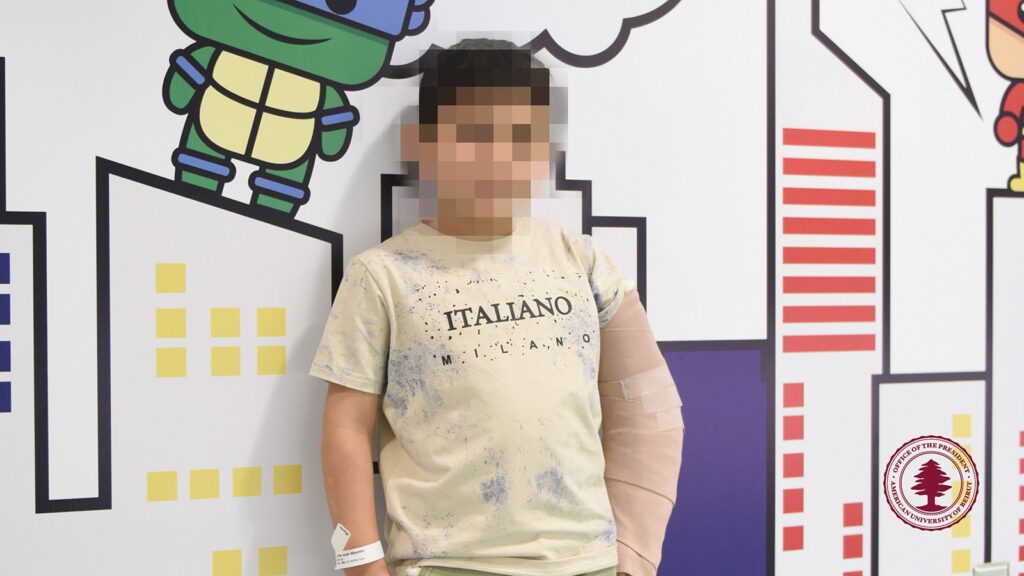
Adam Afana , the five years old child who lost his home, his family, and the almost complete functionality of his left arm in an Israeli attack on Gaza on October 29, 2023, after arriving to AUBMC
Abir has been with Adam all the time, since the moment he landed at the Rafiq Hariri airport. So she picks the words to describe him: “He’s an amazing child, and I was just telling him I don’t know how I’m going to say goodbye to him, once he’ll be fully recovered. He’s way older than five years old in his mind, because he has passed through so much. And he’s a lot of fun. He told me when he grows up, he will marry me.”
Getting him to Lebanon was no easy task: Adam spent more than six weeks in Gaza after he was wounded, sheltering from bombing and undergoing one emergency surgery on his arm without anesthesia: his left arm and leg were severely injured; he was rushed to hospital, underwent several surgeries and was fitted with external fixators. On December 5, his uncle Eid – his main caretaker, who travelled with him to Beirut – managed to enter Gaza City for just two days from Egypt, where he had already been evacuated to, to bring Adam, his mother and his brother out via the Rafah crossing.
“And they were lucky,” Bawarshi comments, highlighting how the latest Israel’s attack on Rafah, in May, has cut off the main crossing into Egypt, constricting aid and stopping what had been a trickle of people leaving for medical help. Yet luck doesn’t seem the most appropriate word to describe Adam’s journey. The family spent nearly six months in Egypt, but Adam’s arm needed specialized care.
“The medical care he could receive in Cairo was extremely basic, while here in Lebanon we host the top experts in treating post-war traumas. Neither in Jordan and Cyprus, far safer places, they have such an experience in treatment and post-traumatic rehabilitation. This is the place to be. Unfortunately, I have to say, because to have so much knowledge in something like that is somehow sad,” Bawarshi explains. And she mentions later cases to come, which are going to be much harder – with amputation, for example – for which the AUB Medical Center’s équipe will have to be at its best.
Beyond the severity of the injury, however – and it is important to stress it once more – it is the psychological care that counts most. The rehabilitation of the body comes together with that of the mind. Talking about Adam’s reaction to medical treatment, in fact, Abir notes how “what makes the arm worse is what he faced. Even just touching his arm is traumatic. Because of his psychological wound, not only for the injury itself.”
The images that have reached us from the Gaza Strip in recent months can perhaps give an idea of the extent of this immense, collective wound: just think of those of names written on the arms of children terrified by the idea of not being identifiable, if devastated by a strike. How in childhood, in normal childhood, we used our bodies to draw, to note dates and notions before a school test, to write down the telephone number of someone among our friends we liked. If the images that keep on arriving from Gaza are enough to coin the expression ‘interrupted childhood’ – and to agree on the extensibility of this interruption for every Palestinian child who survived such horror – imagine what those that have not reached us can do, the photographs that were not taken, the stories left untold, silent under the rubble.
That of Adam is one of hope: symbolic, therefore important to share. “But at the same time we have to be careful in not transforming him into a news,” Bawarshi warns. “Journalists are not allowed to see him. There’s no way. Adam is not a show. Recounting what happened will only make his rehabilitation harder and longer.” His uncle Eid, the caretaker who travelled with him to Beirut, is happy to do it, to talk with the press. “He’s recounting the story of their suffering – albeit traumatic – because he feels the need to tell the world what happened. Why they had such a good life before in Gaza, and now they’re here, and how much they suffered when besieged inside the Strip… and, of course, that he hopes for return.”
Return to their community – first. And ultimately to Gaza again. “They will have to be very well healed, then return to their communities. Either in Egypt, where Adam’s mother is, or to Palestine. But that is something we cannot predict, how Gaza is going to look like.” Abir Bawarshi stresses how important it is to remark that Adam is not a refugee. “They have no intention of staying. Adam can’t wait to go back to his mother and brother in Cairo.”
The Ghassan Abu-Sittah’s Fund and its members have faced many challenges to bring Adam here: now, they’re trying to minimize the hospitalization, to make his staying the least traumatic, giving him some bites of childhood that he is so much in need of. Yet, they’re ready to welcome as many children as possible. “We have been working since December in putting the groundwork for their arrival. However, the legal process was the main obstacle to let Adam and his uncle in. The Palestine Children’s Relief Fund helped a lot in guaranteeing them a safe journey and arrival, liaising with both the Lebanese and Egyptian authorities. The Lebanese Red Cross also helped us, taking care of the commute from the airport to the AUBMC.” Now, it seems, it is just a matter of coordination and expertise.
Despite not being able to give an estimation, Bawarshi once more highlights that the organizations intend to make sure each child receives the necessary treatment and support before returning to their community safely to continue the process of recovery. “Adam is the first of many children to come,” she says, “as many as we’re allowed to give visas to, as well as those whose rehabilitation the fund will be able to cover.”
The Ghassan Abu-Sittah Children’s Fund

Adam with The President of the AUB, Fadlo Khuri at AUBMC
Talking about the support of their donors, Abir Bawarshi doesn’t seem surprised. “The community was beyond supportive. There are so many people that have been helping with their time, money, food, toys for the children, and so much more.” While the money of the funders covers the AUBMC hospitalization, the housing, food, clothing, for the kid and the caretaker, all the rest – teaching, entertainment, for instance – is volunteer-based. The organization restricted the appeal to local volunteers, organizing workshops to train them on how to deal with traumatized children.
The global community has helped as well, especially because of Ghassan’s renowned name. Ghassan Abu-Sittah, a British-Palestinian plastic and reconstructive surgeon specialized in trauma-related injuries – as well as Dean of Glasgow University -, entered Gaza on October 13, and spent forty-three days in the besieged enclave treating the wounded, notably at Al-Shifa Hospital. He’s one of the survivors of the Al-Ahli Baptist Hospital terrible attack of October 17, which according to the Gaza’s Health Ministry caused 471 deaths and 314 injuries. In 2015, Abu-Sittah co-founded and became director of the Conflict Medicine Program at Global Health Institute at the American University of Beirut, and between June 7 and 8, 2024 he will be granted an honorary doctorate degree from the AUB, the University’s highest form of recognition, as it was officially announced last month, being described as a “prominent war surgeon known for his courage and humanitarianism in volunteering to treat war-injured patients across the Arab region for decades.”
When he came back to Lebanon, evacuated from Gaza, he joined a group of volunteers: after brainstorming together, they came up with the idea of establishing the Children’s Fund. “Why Lebanon, you might ask. With all the insecurities surrounding this country, and the multiple crises. Why not Jordan, for example. Well, there’s a reason why Ghassan chose Lebanon, and Beirut specifically,” Bawarshi explains. “There is a sad reason, unfortunately. After many years of Civil War, Israeli invasion, and lately after the port’s blast, Lebanon became expert in dealing with major traumas’ response. We have the know-how, the medical expertise, the rehabilitation facilities, and highly-specialized burn units.”
She mentions as well the cultural proximity with Palestine, which would make the re-adaptation for the wounded children as normal as possible, avoiding burdening them with yet another trauma – that of linguistic and cultural barriers. “In Lebanon, children like Adam would be integrated into communities that look like their original ones, which is helpful for their mental health, as for their physical, social, and psychological healing.”
The Fund’s launching post on its Instagram account dates to January 17, announcing the mission – to bring children from Gaza to Lebanon for treatment – and calling for donations. “By treating the children in Lebanon,” the post reads, “we not only offer them exceptional care and access to doctors who have unparalleled experience with war injuries, but also help to relieve the medical sector in Gaza and the Occupied Territories.” And it adds: “Today, we’re not just planning for tomorrow; we’re crafting a lifeline for the children of Gaza.”
Crafting the lifeline, No Surviving Family
After days spent treating people wounded by Israeli shelling on Gaza, Dr. Abu-Sittah tweeted five letters: W.C.N.S.F. It’s an acronym for Wounded Child, No Surviving Family – a condition that became extremely frequent in Gaza hospitals during the past eight months.
Orphanhood, however, is a dire reality on the ground in Gaza that precedes October 7, as Taawoun knows deeply. Among the programs that the organization has been carrying out since 2009, is the Gaza’s Orphan Care Program. In partnership with the Bank of Palestine Group, Taawoun launched the program to support 20,000 children orphaned by the multiple wars against Gaza. Over the last fifteen years, the organization has supported 4,261 orphans in the Strip, providing a holistic model for orphans, encompassing educational, financial, and health support, based on their individual needs. “At Taawoun, we have always believed that the future of orphans in Gaza is our collective responsibility,” Bawarshi says.
How to deal with the orphans of the latest Israeli onslaught on Palestinians, though, it is a question whose answer remains partially virtual. “After October 7,” she explains, “this has completely changed, as at least 25,000 children in Gaza have been left orphans by the ongoing Israeli aggression.” Hence the project expanded, in order to create a bigger appeal, which will only be able to start on the day after the war ends. “Now we cannot operate. Apart from the immediate relief, there are bigger, deeper traumas that we’re not able to understand until a ceasefire is ensured.”
As of today, stuck in the uncertainty of when and how, it is impossible to craft long-term sustainability for the children of Gaza. Organizations like Taawoun, as well as initiatives like the Ghassan Abu-Sittah Children’s Fund – albeit incredibly helpful – are only band-aid solutions if compared to the dramatic, massive disruption of a whole generation. Bawarshi ensures, yet concerned: “we are preparing for that day after, but it keeps on being postponed.” The more we wait, the longer it will take – for Adam and the dozens of thousands of injured kids of Gaza – to recover, physically and mentally, and take back the right to their childhood. Albeit interrupted.
Something, however, is certain. Even though we cannot predict how Gaza will look like after the war ends, these children will be back to their community, grow up among them, living witnesses of this atrocious historical moment – yet themselves the testimony of what shared solidarity can do.


